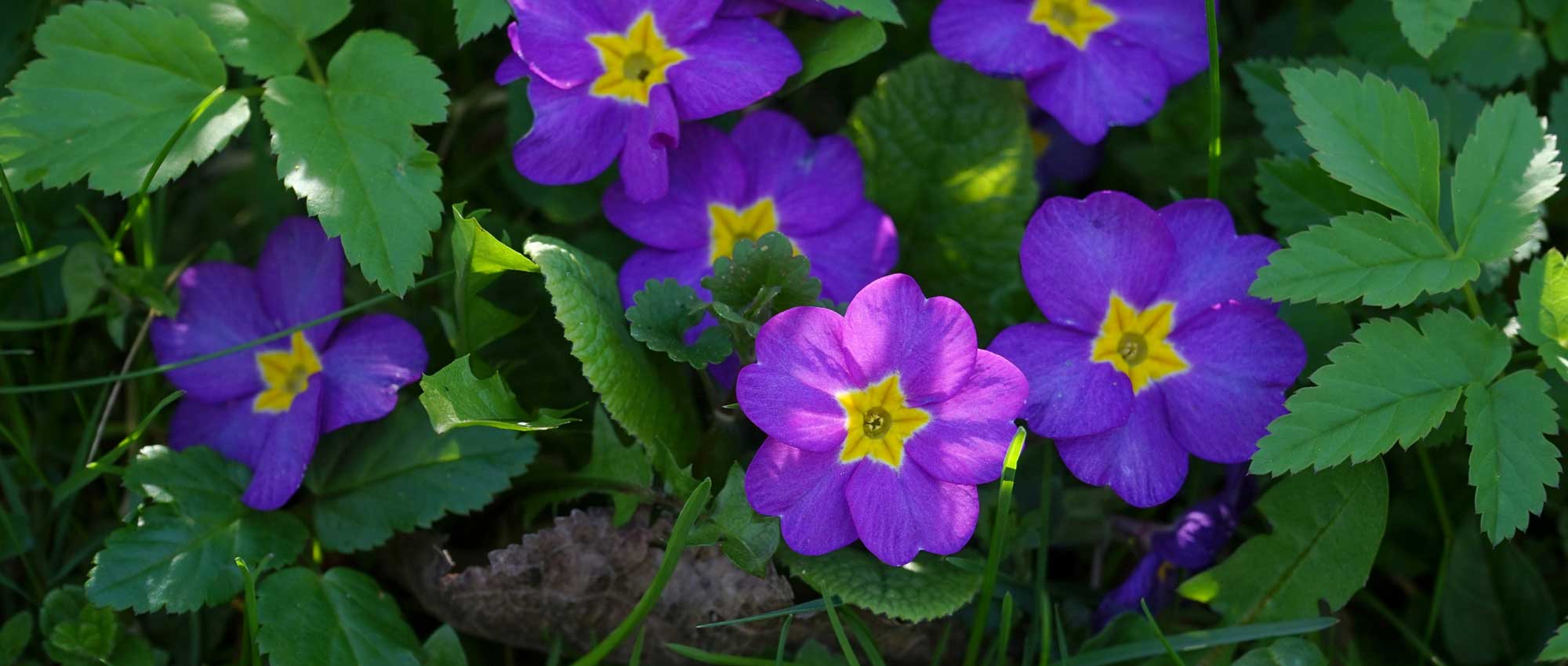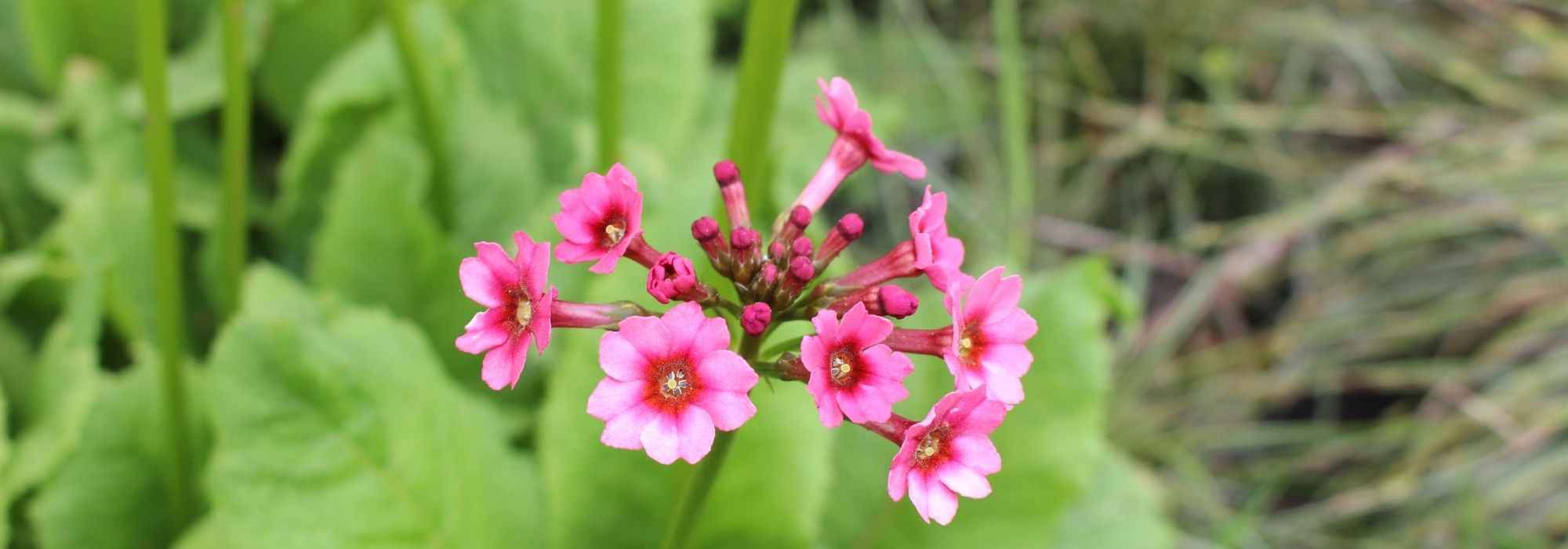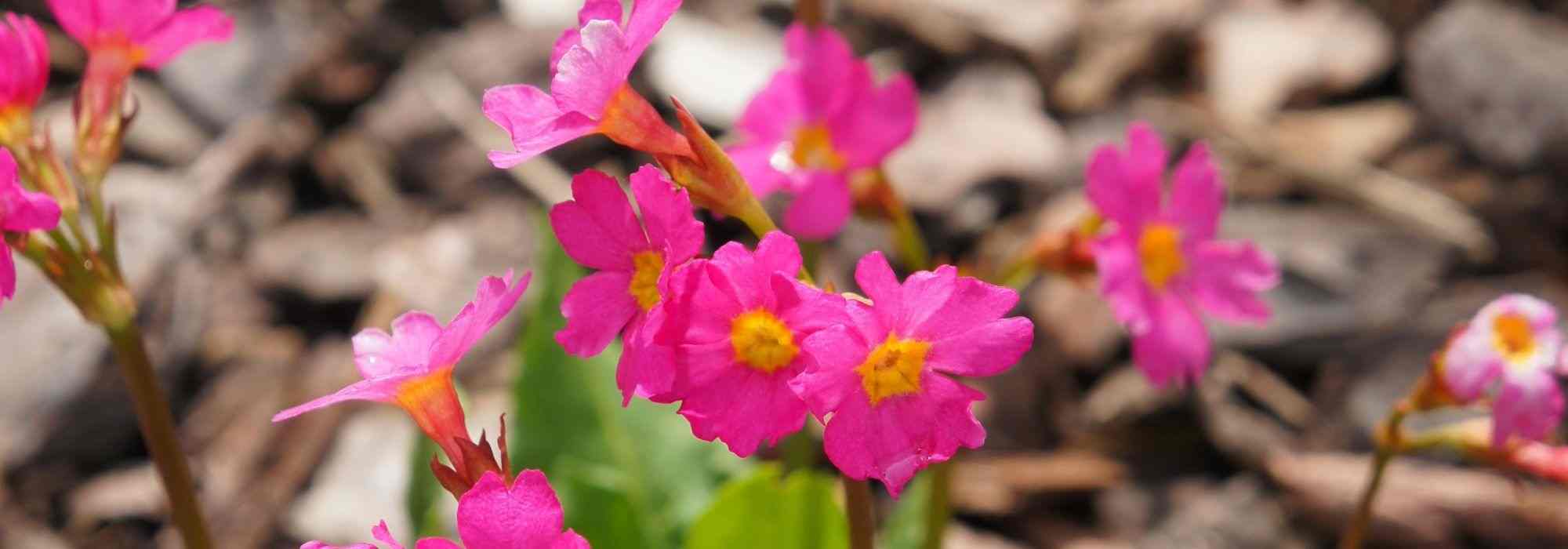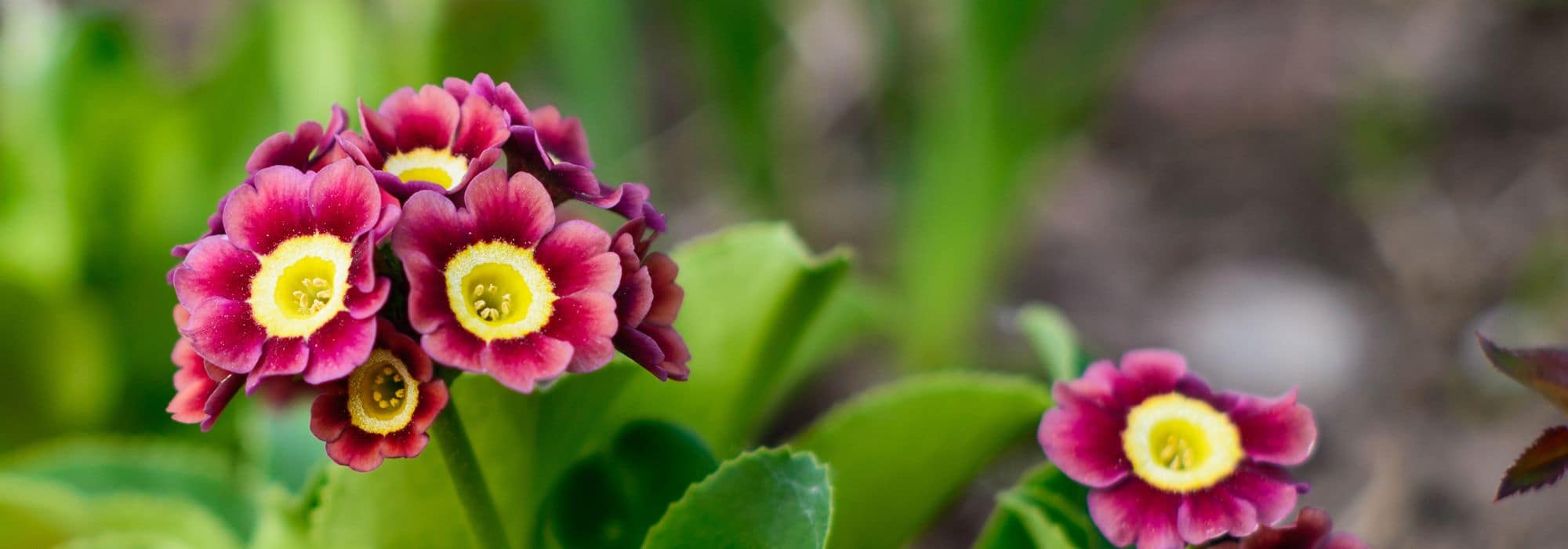

Primula Raesberry Rose - English Primrose
Primula Raesberry Rose - English Primrose
Primula x vulgaris Raesberry Rose
Primrose, Common Primrose, English Primrose
Special offer!
Receive a €20 voucher for any order over €90 (excluding delivery costs, credit notes, and plastic-free options)!
1- Add your favorite plants to your cart.
2- Once you have reached €90, confirm your order (you can even choose the delivery date!).
3- As soon as your order is shipped, you will receive an email containing your voucher code, valid for 3 months (90 days).
Your voucher is unique and can only be used once, for any order with a minimum value of €20, excluding delivery costs.
Can be combined with other current offers, non-divisible and non-refundable.
This plant carries a 6 months recovery warranty
More information
We guarantee the quality of our plants for a full growing cycle, and will replace at our expense any plant that fails to recover under normal climatic and planting conditions.
Would this plant suit my garden?
Set up your Plantfit profile →
Description
Primula 'Raesberry Rose' is a hybrid primrose distinguished by its intense, almost fluorescent pink colouring and its rather slender flowering stems: it stands out in any spring display! Whether in border plantings or containers, it brightens up the surroundings of the house from the end of winter. Like other primroses, it grows in sun or partial shade in moist, humus-bearing soil.
Primrose 'Raesberry Rose' belongs to the Primulaceae family, which includes many ornamental species from temperate climates. This variety is part of the polyanthus primroses (or polyantha), a group of horticultural hybrids resulting from cross-breeding between Primula vulgaris, veris and sometimes elatior. They form rosettes of low-growing leaves but carry their flowers on elongated stems. 'Raesberry' was selected for the exceptional vibrancy of its flowering. Theoretically a perennial, this primrose is often cultivated as a biennial, particularly in seasonal beds, as it offers more generous and uniform flowering in its first year.
'Raesberry Rose' was developed by the Belgian hybridiser Rudy Raes, who is also responsible for the famous 'Zebra' series. This cultivar has unique characteristics: single flowers, widely open, 4 to 5 cm in diameter, of an extremely vivid pink, with an intense red central eye that enhances their brilliance. Carried on exceptionally long flowering stems for a primrose (up to 15 cm), they stand out clearly from the foliage. The abundant flowering period lasts from February to April. The foliage forms a dense basal rosette, composed of crinkled, elongated, medium to dark green, 10 to 15 cm long leaves. These leaves are semi-evergreen to deciduous in winter, depending on climatic conditions (they may remain in place during a mild winter but disappear during prolonged frost). The plant reaches 20 cm in height when in flower and spreads 15 to 20 cm. It has a rapid growth rate and flowers in its first growing season.
The 'Raesberry Rose' primrose is a variety with a strong character, standing out in the garden as well as in pots on the balcony. Its fluorescent pink colour loudly heralds the end of winter and the return of spring. This variety pairs particularly well with other primroses like the jade and chartreuse green 'Francisca' or the blue and white striped 'Zebra Blue'. In containers, it can accompany botanical tulips, Prim’Up Ocean Mix’ pansies in shades of blue and white, and forget-me-nots. In open ground, it is perfect for borders, in flowerbeds, under deciduous bushes or in damp rockeries, alongside snowdrops, violets and squills.
Report an error about the product description
Flowering
Foliage
Plant habit
Botanical data
Primula
x vulgaris
Raesberry Rose
Primulaceae
Primrose, Common Primrose, English Primrose
Primula polyanthus Raesberry Rose
Cultivar or hybrid
Planting and care
'Raesberry Rose' primroses should be planted in containers and planters or directly in open ground in finely prepared and enriched soil. Plant them if possible upon receipt, in September-October. If the intended location is not yet ready or conditions are unfavourable for planting, you can grow them on in pots for 4 to 6 weeks.
For containers and planters, use a good, light and well-draining flowering plant compost (such as geranium compost) enriched with clay and slow-release fertiliser. The top of the root ball should be level with the compost. Water thoroughly at planting and during the following weeks, as plug plants can dry out quickly. However, be careful of excess water! Ensure you use containers with drainage holes and empty the saucer 10 minutes after watering. Remember to water even during winter if it doesn't rain or if the container is placed in a sheltered location. Do not water during frost periods.
Very floriferous and with rapid growth, biennial primroses are greedy plants. From when growth resumes in late February or early March and throughout the flowering period, apply a liquid fertiliser for flowering plants containing iron and trace elements 1 to 2 times per week with the watering water. Remove faded flowers to encourage new flowering. Once flowering is finished, container plants can be replanted in the garden in partial shade.
Planting period
Intended location
Care
Planting & care advice
This item has not been reviewed yet - be the first to leave a review about it.
Haven't found what you were looking for?
Hardiness is the lowest winter temperature a plant can endure without suffering serious damage or even dying. However, hardiness is affected by location (a sheltered area, such as a patio), protection (winter cover) and soil type (hardiness is improved by well-drained soil).

Photo Sharing Terms & Conditions
In order to encourage gardeners to interact and share their experiences, Promesse de fleurs offers various media enabling content to be uploaded onto its Site - in particular via the ‘Photo sharing’ module.
The User agrees to refrain from:
- Posting any content that is illegal, prejudicial, insulting, racist, inciteful to hatred, revisionist, contrary to public decency, that infringes on privacy or on the privacy rights of third parties, in particular the publicity rights of persons and goods, intellectual property rights, or the right to privacy.
- Submitting content on behalf of a third party;
- Impersonate the identity of a third party and/or publish any personal information about a third party;
In general, the User undertakes to refrain from any unethical behaviour.
All Content (in particular text, comments, files, images, photos, videos, creative works, etc.), which may be subject to property or intellectual property rights, image or other private rights, shall remain the property of the User, subject to the limited rights granted by the terms of the licence granted by Promesse de fleurs as stated below. Users are at liberty to publish or not to publish such Content on the Site, notably via the ‘Photo Sharing’ facility, and accept that this Content shall be made public and freely accessible, notably on the Internet.
Users further acknowledge, undertake to have ,and guarantee that they hold all necessary rights and permissions to publish such material on the Site, in particular with regard to the legislation in force pertaining to any privacy, property, intellectual property, image, or contractual rights, or rights of any other nature. By publishing such Content on the Site, Users acknowledge accepting full liability as publishers of the Content within the meaning of the law, and grant Promesse de fleurs, free of charge, an inclusive, worldwide licence for the said Content for the entire duration of its publication, including all reproduction, representation, up/downloading, displaying, performing, transmission, and storage rights.
Users also grant permission for their name to be linked to the Content and accept that this link may not always be made available.
By engaging in posting material, Users consent to their Content becoming automatically accessible on the Internet, in particular on other sites and/or blogs and/or web pages of the Promesse de fleurs site, including in particular social pages and the Promesse de fleurs catalogue.
Users may secure the removal of entrusted content free of charge by issuing a simple request via our contact form.
The flowering period indicated on our website applies to countries and regions located in USDA zone 8 (France, the United Kingdom, Ireland, the Netherlands, etc.)
It will vary according to where you live:
- In zones 9 to 10 (Italy, Spain, Greece, etc.), flowering will occur about 2 to 4 weeks earlier.
- In zones 6 to 7 (Germany, Poland, Slovenia, and lower mountainous regions), flowering will be delayed by 2 to 3 weeks.
- In zone 5 (Central Europe, Scandinavia), blooming will be delayed by 3 to 5 weeks.
In temperate climates, pruning of spring-flowering shrubs (forsythia, spireas, etc.) should be done just after flowering.
Pruning of summer-flowering shrubs (Indian Lilac, Perovskia, etc.) can be done in winter or spring.
In cold regions as well as with frost-sensitive plants, avoid pruning too early when severe frosts may still occur.
The planting period indicated on our website applies to countries and regions located in USDA zone 8 (France, United Kingdom, Ireland, Netherlands).
It will vary according to where you live:
- In Mediterranean zones (Marseille, Madrid, Milan, etc.), autumn and winter are the best planting periods.
- In continental zones (Strasbourg, Munich, Vienna, etc.), delay planting by 2 to 3 weeks in spring and bring it forward by 2 to 4 weeks in autumn.
- In mountainous regions (the Alps, Pyrenees, Carpathians, etc.), it is best to plant in late spring (May-June) or late summer (August-September).
The harvesting period indicated on our website applies to countries and regions in USDA zone 8 (France, England, Ireland, the Netherlands).
In colder areas (Scandinavia, Poland, Austria...) fruit and vegetable harvests are likely to be delayed by 3-4 weeks.
In warmer areas (Italy, Spain, Greece, etc.), harvesting will probably take place earlier, depending on weather conditions.
The sowing periods indicated on our website apply to countries and regions within USDA Zone 8 (France, UK, Ireland, Netherlands).
In colder areas (Scandinavia, Poland, Austria...), delay any outdoor sowing by 3-4 weeks, or sow under glass.
In warmer climes (Italy, Spain, Greece, etc.), bring outdoor sowing forward by a few weeks.









































